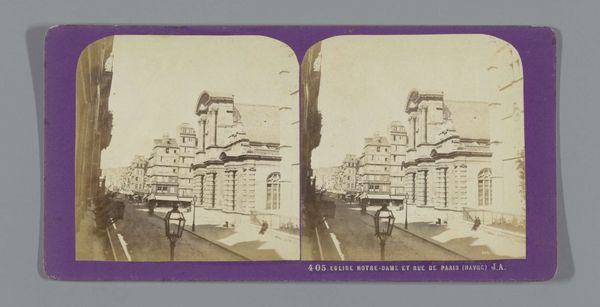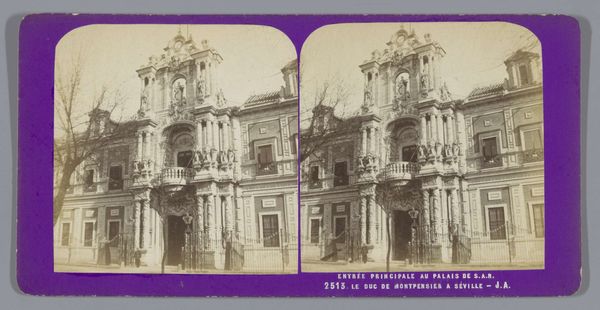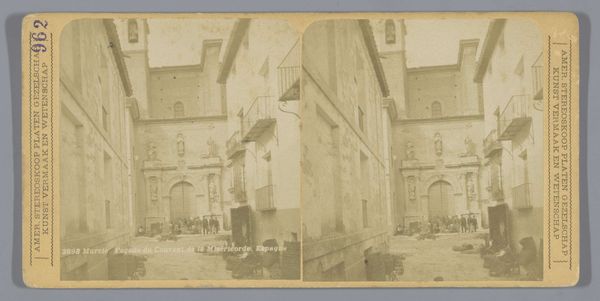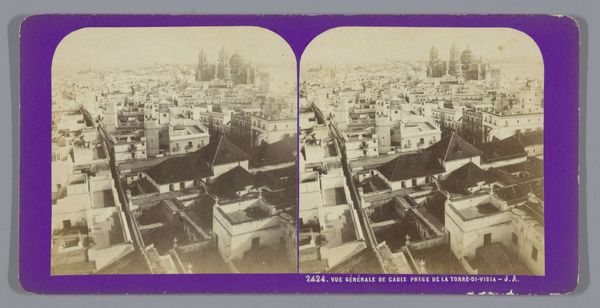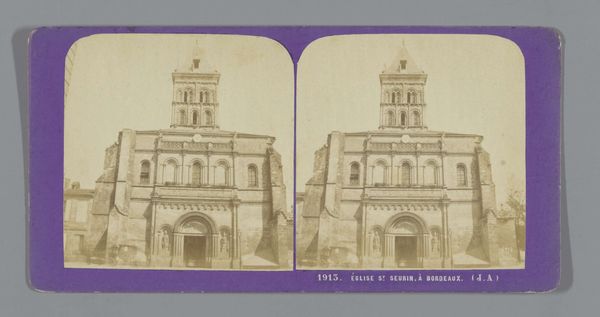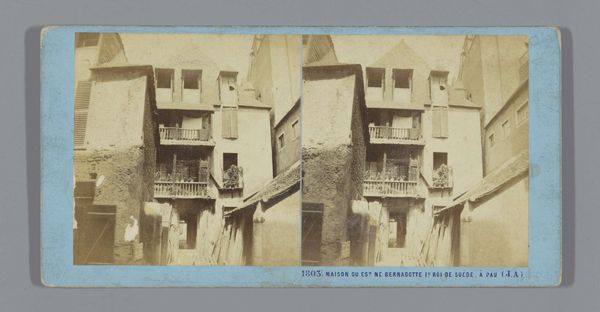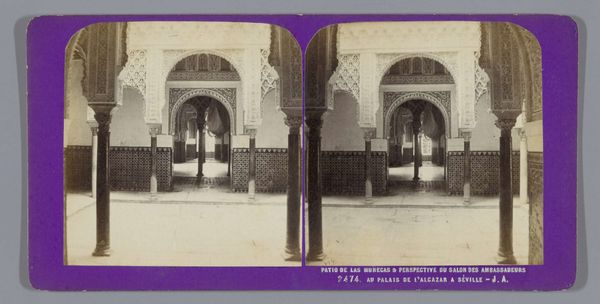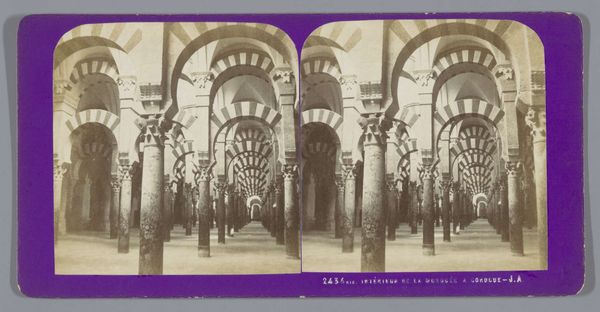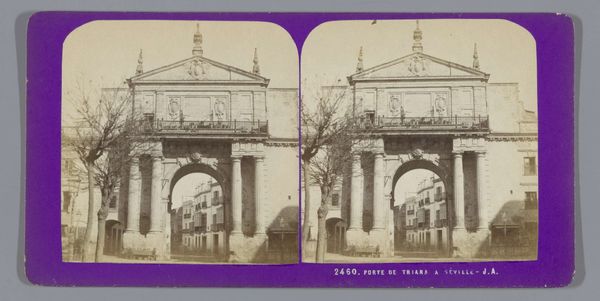
Straat te Hondarribia, met zicht op de Iglesia de Santa María de la Asunción y del Manzano 1862 - 1876
0:00
0:00
photography, albumen-print
#
photography
#
cityscape
#
street
#
albumen-print
Dimensions: height 85 mm, width 170 mm
Copyright: Rijks Museum: Open Domain
Curator: Jean Andrieu’s stereoscopic albumen print, titled "Straat te Hondarribia, met zicht op de Iglesia de Santa María de la Asunción y del Manzano," made sometime between 1862 and 1876, depicts a narrow street in Hondarribia, leading to the Iglesia de Santa María. Editor: My immediate reaction is one of enclosed tranquility. The high buildings press in on either side, framing a view towards the church in the distance. There's a certain quiet stillness conveyed by the albumen print's muted tones. Curator: It is intriguing to consider how photography was being mobilized in this period, how it both documented and shaped perceptions of urban spaces. This stereoscopic format, meant for viewing with a special device, provided a sense of depth that painting or drawing alone could not achieve. Andrieu, a fairly obscure figure now, was deeply engaged with this burgeoning medium. Editor: Absolutely, and consider the perspective he's chosen – almost an embrace of the labor embedded within the photograph itself. It brings a palpable sense of human presence despite the scene being unpopulated. There are those rows of simple balconets affixed to the stone that provide very specific detail to a moment in time, really underlining who inhabited that location. Curator: Hondarribia, located on the border of France and Spain, held strategic military significance. The church in the photograph symbolizes both spiritual power and the political power invested in religion. The architecture speaks to layers of history, from medieval origins to more recent renovations. I wonder what social relations played out on this street and within those buildings. Who lived and worked here? Editor: Indeed. Early photography often captured not just what was visible, but a visual record that became integral to a specific social moment that we must consider now, decades removed. Curator: By exploring such photographs, we can begin to trace connections between the architecture and societal developments. Understanding labor, materials, processes, as well as visual output. Editor: For sure. This photograph invites us to remember the significance of place and how our reading of art deepens the stories of marginalized narratives, and the experience of ordinary existence during the Second Empire.
Comments
No comments
Be the first to comment and join the conversation on the ultimate creative platform.
